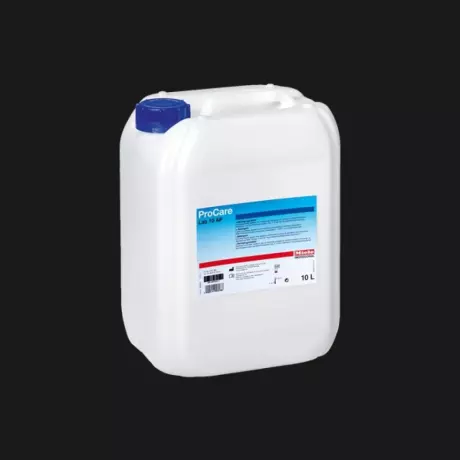
Miele cleaning and disinfection machine with...
LabTech Labortechnik GmbH offers you a large selection of medical technology - rinsing, cleaning and...
Portal and digital medical technology fair of the largest MedTech cluster in Germany

Miele cleaning and disinfection machine with...
LabTech Labortechnik GmbH offers you a large selection of medical technology - rinsing, cleaning and...

Laboratory technology - laboratory washers...
LabTech Labortechnik GmbH offers you a large selection of laboratory technology - laboratory washers...

Procare liquid cleaners and powder cleaners...
LabTech Labortechnik GmbH offers you a large selection of laboratory technology - Procare liquid cle...

Upper basket for optimal accommodation of...
100 Upper basket for optimal accommodation of injector modules or inserts Upper basket with...

Large-capacity laboratory washer - laboratory...
LabTech Labortechnik GmbH offers you a large selection of laboratory technology - large laboratory w...

Laboratory glassware should be cleaned before use. In order to maintain a consistent level of sterility, cleaning must be done without removing surface coatings. Avoid detergents as they can interfere with cultural and serologic reactions. There are several types of laboratory cleaners and disinfectants. Here are some examples. Listed below are a few of the most popular ones. Let's start with the most basic ones. These are the most widely used in the lab.
For the most effective cleaning, you should immerse the glassware in acid water for several hours. If the experiment requires precision chemical testing, use 1% hydrochloric acid. To avoid leaving residues on the surface, use plastic handle brushes. If the solution is too strong, you can rinse it with warm water. After you have rubbed the surface with the detergent, you can rinse the glassware thoroughly. After you've rinsed it off, you can use the same solution to disinfect any other glassware.
To get the best results, you should use a mild abrasive cleaning agent. This type of chemical can be used to remove dirt that is impossible to remove by hand. However, it's important to be careful not to scratch the glass as this could cause a serious accident. If you want to keep the glassware sterile, Corning, and MilliporeSigma recommend soaking it in a gentle solvent for 30 minutes.
Other cleaning solutions are recommended for glassware. Using acid cleaning solution to disinfect glassware is necessary for precise chemical testing. A solution of 1% hydrochloric acid is preferred for these types of experiments. Make sure to use plastic handle brushes with these solutions. For more gentle cleaning, use a 2% hydrogen peroxide solution. A 10% solution is recommended for cleaning large bottles or tubes. In addition, you should rinse the cleaning solutions with water before using them.
In addition to a mild chemical solution, there are also other options available for disinfecting laboratory glassware. A deionized solution is best for bacteria and other water-soluble materials. After disinfecting glassware, you should rinse it with hot soapy water three or four times. After each rinse, you should add a little bit of deionized water and then use a solvent. You may also rinse the glassware with water to remove the dirt on the surface.
A disinfectant solution should be added to the cleaning solution. Then, the solution should be diluted and used again. Once the glassware is clean, it must be completely dry to use it. Depending on the contamination, a chromatographic solvent is recommended for cleaning. If you are using a chromic acid solution, be sure to follow the manufacturer's instructions when disposing of the solution. A deionized water can help you avoid the use of harmful chemicals.
To ensure sterility, you should sterilize culture media and serology tubes before cleaning them. A sterile solvent is best for water-soluble substances, while ethanol is best for spore-bearing bacteria. The solution should be deionized to prevent cross-contamination. For non-water-soluble solutions, it is recommended to use an ethanol-based solvent. After sterilization, it is advisable to dry the glassware with deionized water.
Using distilled water is the best option for cleaning volumetric lab glassware. If the liquid contains contaminants, the distilled water will not penetrate into the sample, which may result in inaccurate results. Then, you can apply a solvent on the surface of the glassware. In a sterile environment, this solution will prevent the formation of harmful substances. In addition to a sterile environment, a sterile water-free environment will ensure a safe working environment for your scientists.
In the laboratory, it is important to keep the glassware clean. In particular, it is crucial to avoid cross-contamination between labware. As well as keeping the glassware clean, it will also help to maintain the sterility of the laboratory. When it comes to microbiological assays, the surface of the glassware is an important factor in accuracy. It can lead to errors in measurements. As a result, contaminated labware can be dangerous to your experiments.
Become a digital exhibitor yourself in the online portal of the largest and best-known MedTech cluster region in Germany and inform the world of medical technology about your products and services as well as about news, events and career opportunities.
With an attractive online profile, we will help you to present yourself professionally on our portal as well as on Google and on social media.